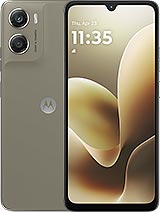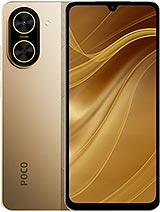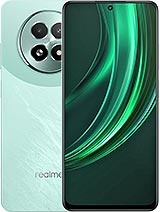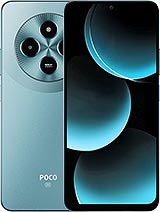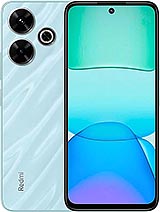Poco M7 alternatives
Tap above to see alternatives.
Redmi 13 alternatives
Tap above to see alternatives.
2x2.2 GHz Cortex-A78
6x1.95 GHz Cortex-A55
2x2.2 GHz Cortex-A78
6x2.0 GHz Cortex-A55
8GB 128GB (UFS 2.2)
8GB 128GB (UFS 2.2)
8GB 256GB (UFS 2.2)
f/1.8, (wide), 1/2.96", PDAF
f/1.8, (wide), 0.64µm, PDAF
2 MP
(depth)
f/2.0, (wide)
f/2.5, (wide)
SIM1: Nano, SIM2: Nano
SIM1: Nano, SIM2: Nano (Hybrid)
16 5G bands
n1, n2, n3, n5, n7, n8, n20, n26, n28, n38, n40, n41, n48, n66, n77, n78
7 5G bands
n1, n3, n5, n8, n28, n40, n78
In this performance comparison, the Redmi 13 with its Qualcomm Snapdragon 4 Gen 2 AE (4nm) performs better than the Poco M7 with the Qualcomm Snapdragon 4 Gen 2 (4nm), thanks to superior chipset efficiency.
Both phones offer the same 2 years of OS update support. For security updates, Poco M7 offers 4 years of support compared to Redmi 13's 3 years.
Both Poco M7 and Redmi 13 use LCD screens. Both smartphones offer the same 120 Hz refresh rate. Poco M7 also boasts a brighter screen with 600 nits of peak brightness, enhancing outdoor visibility. Notably, Redmi 13 offers a higher screen resolution, resulting in sharper visuals and more detailed content.
Poco M7 comes with a larger 5160 mAh battery, which may offer longer usage on a single charge. Redmi 13 also supports faster wired charging at 33W, compared to 18W on Poco M7.
Redmi 13 offers better protection against water and dust with an IP53 rating.
- Redmi 13 – Check price here
¹ Scores can vary even with the same chipset due to RAM, thermals, and software optimization.



